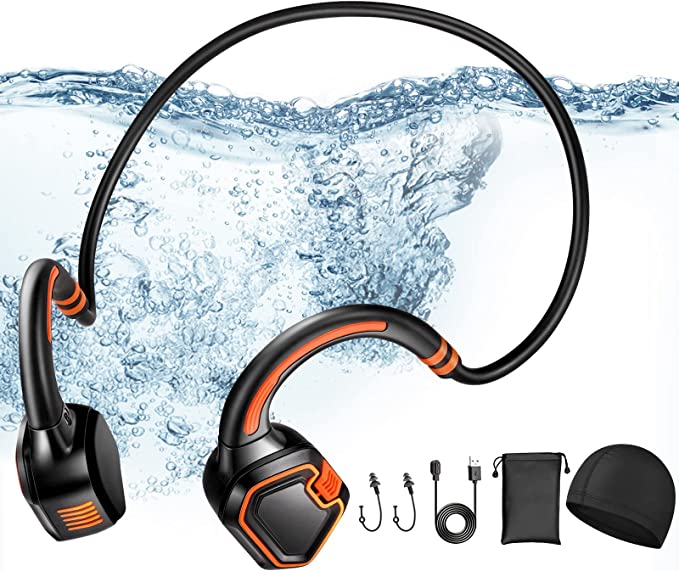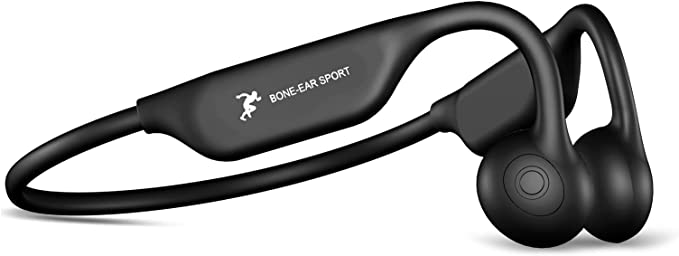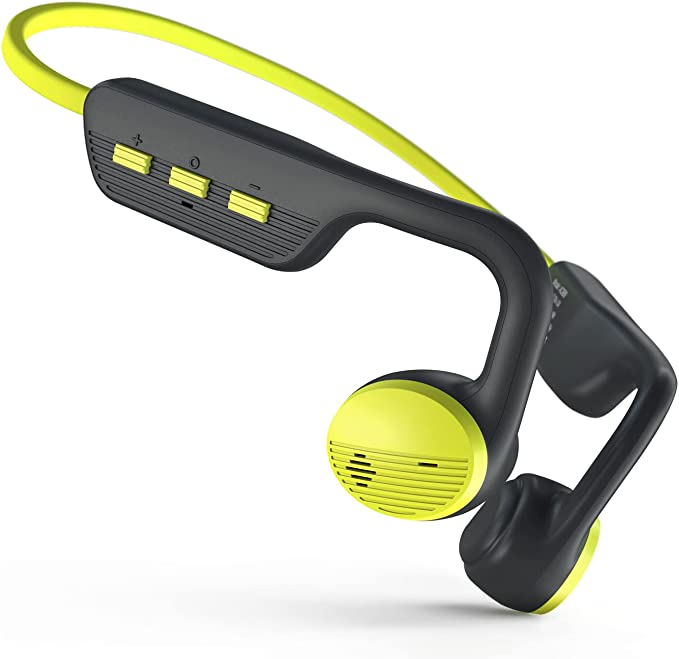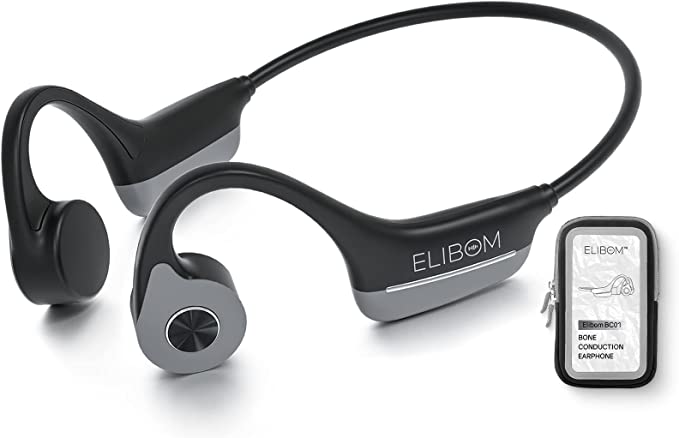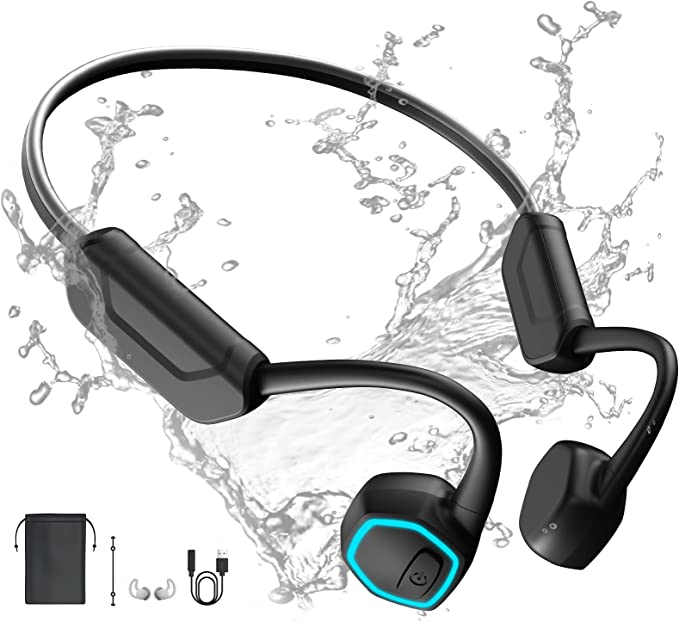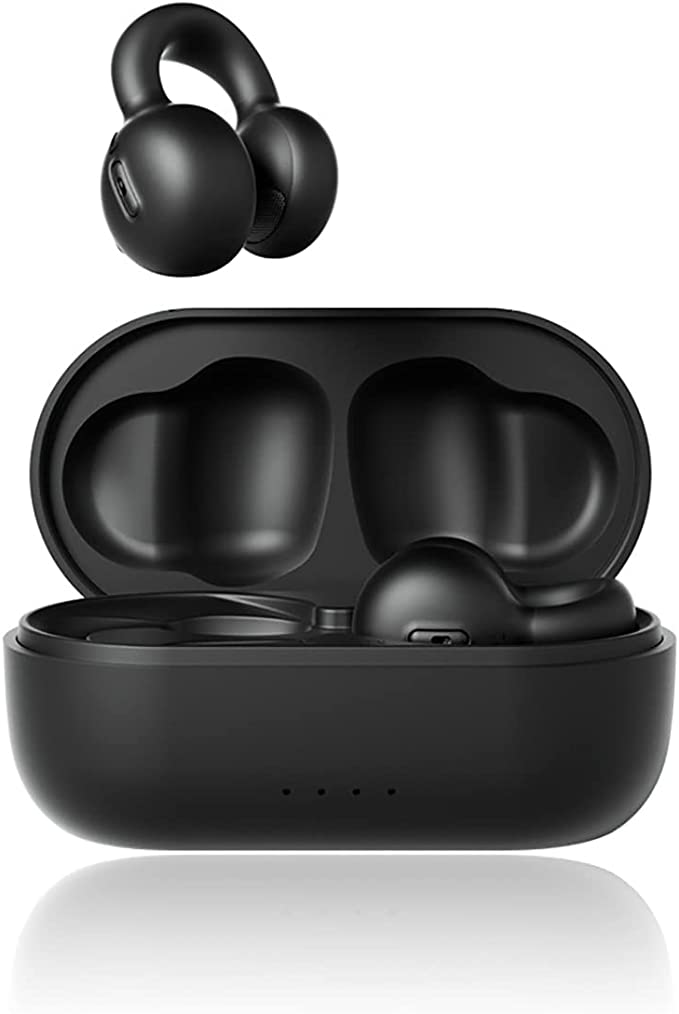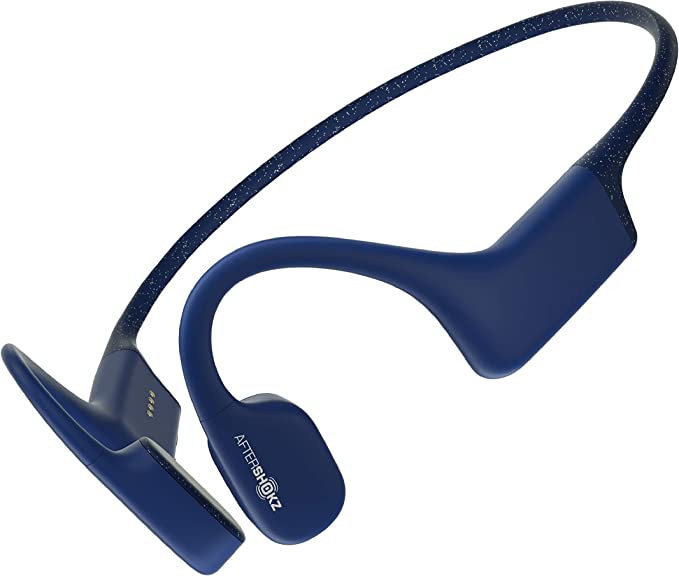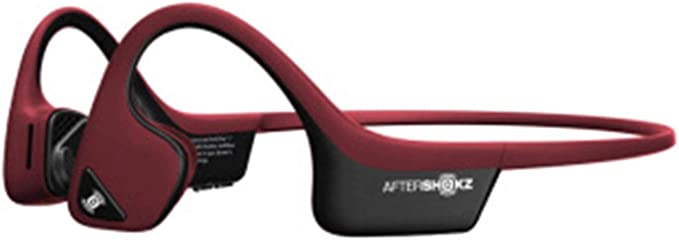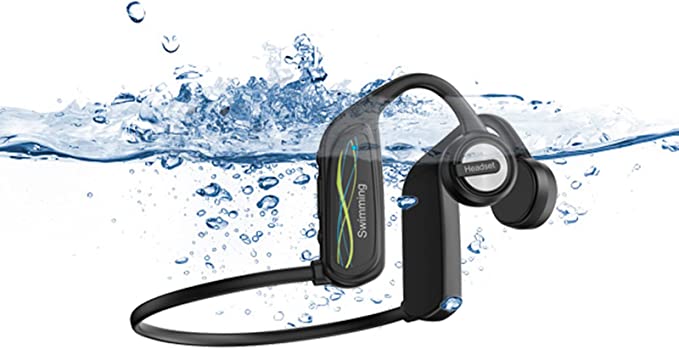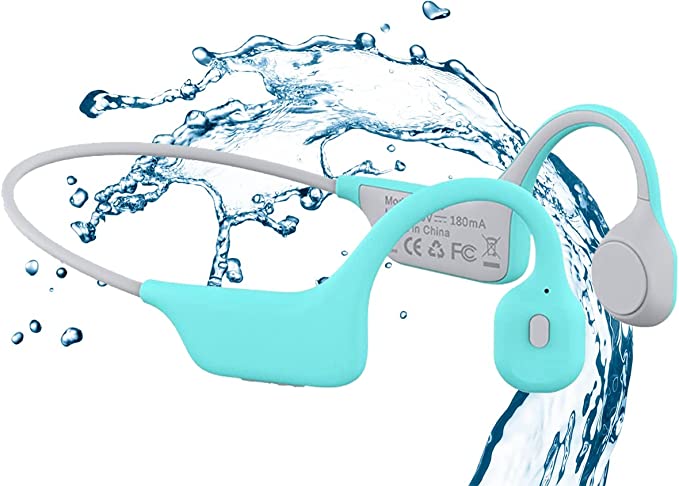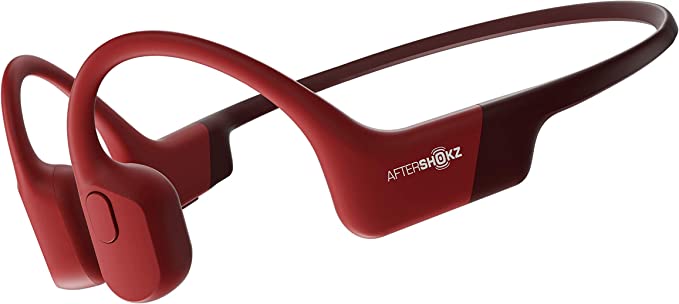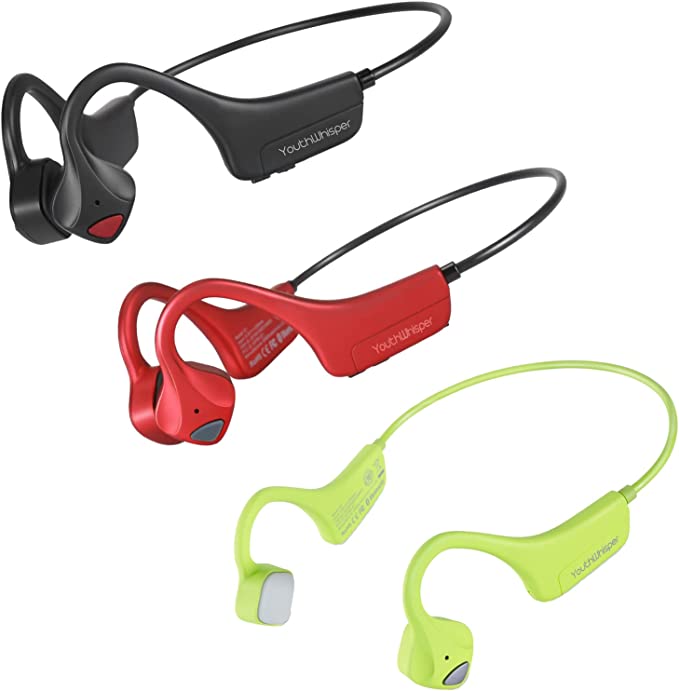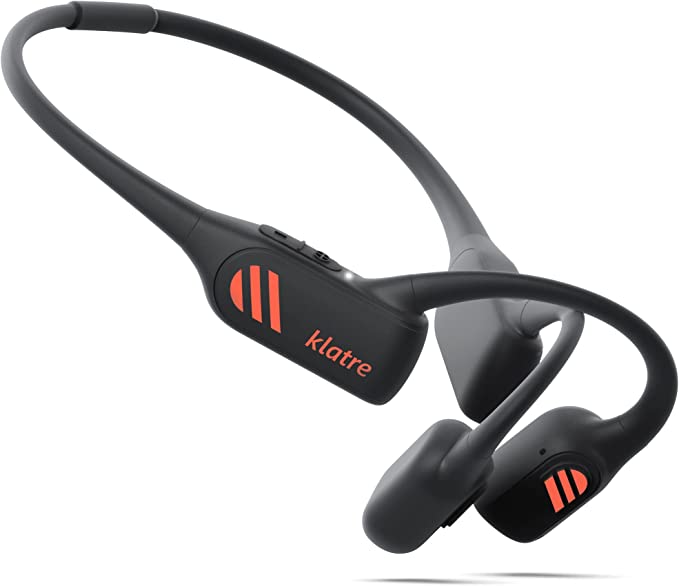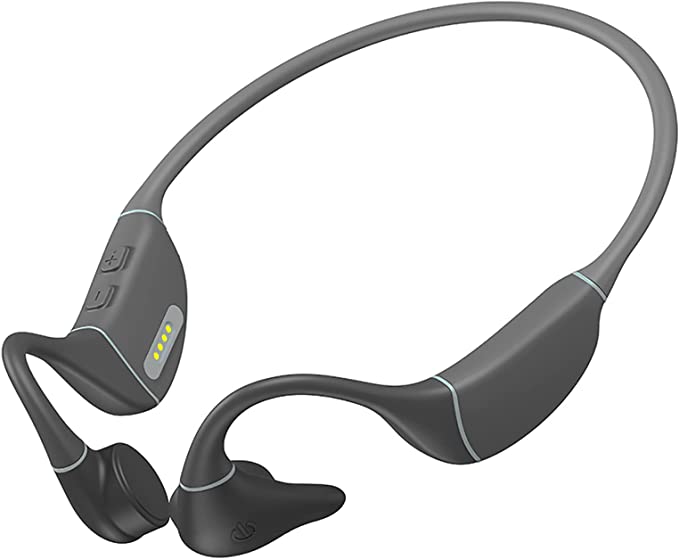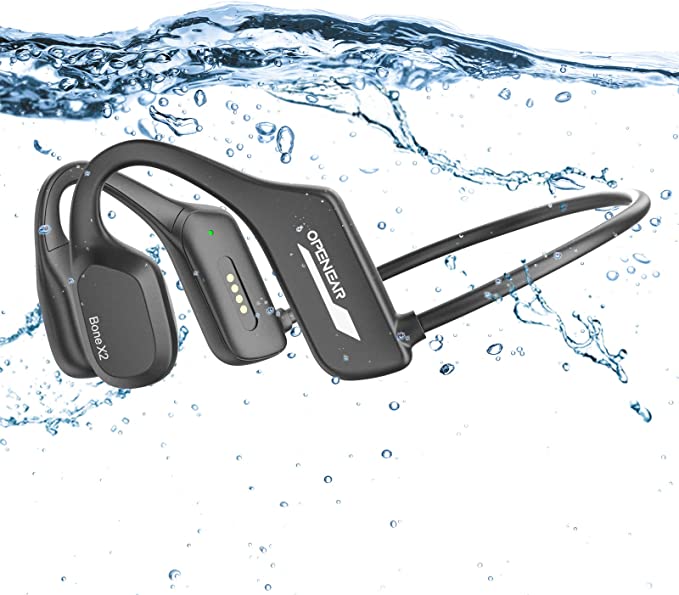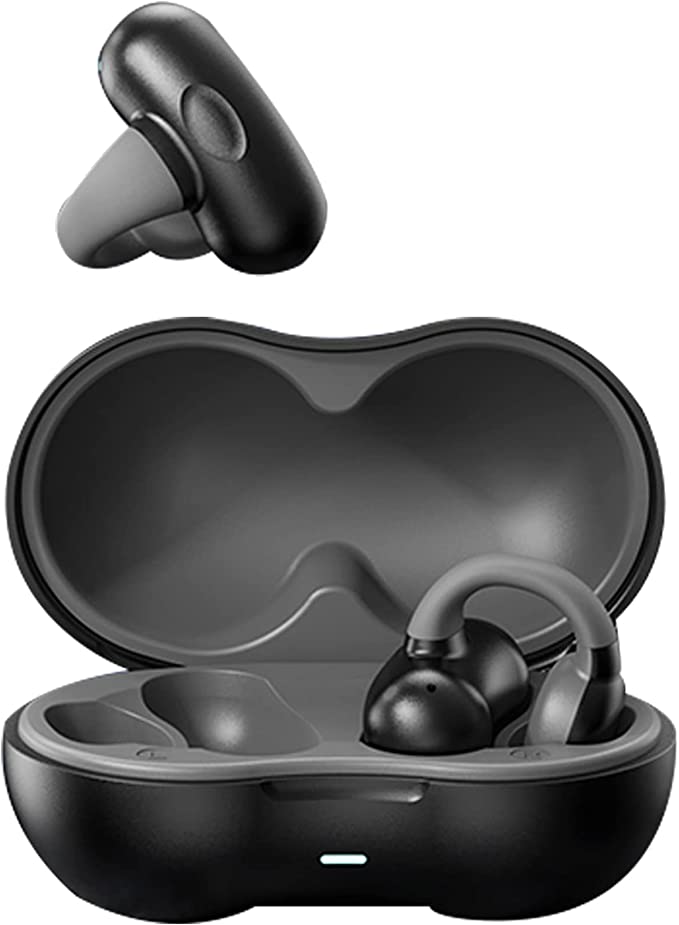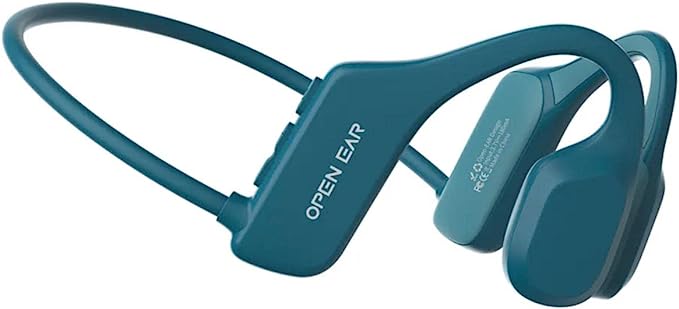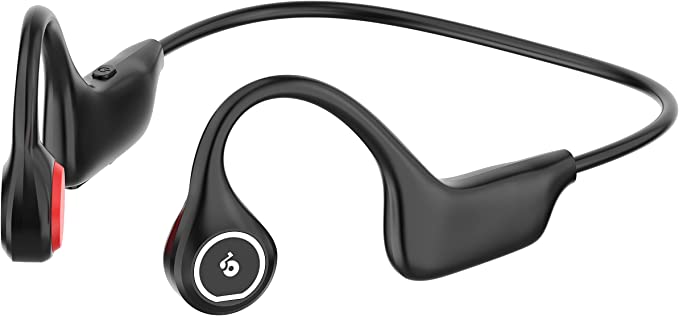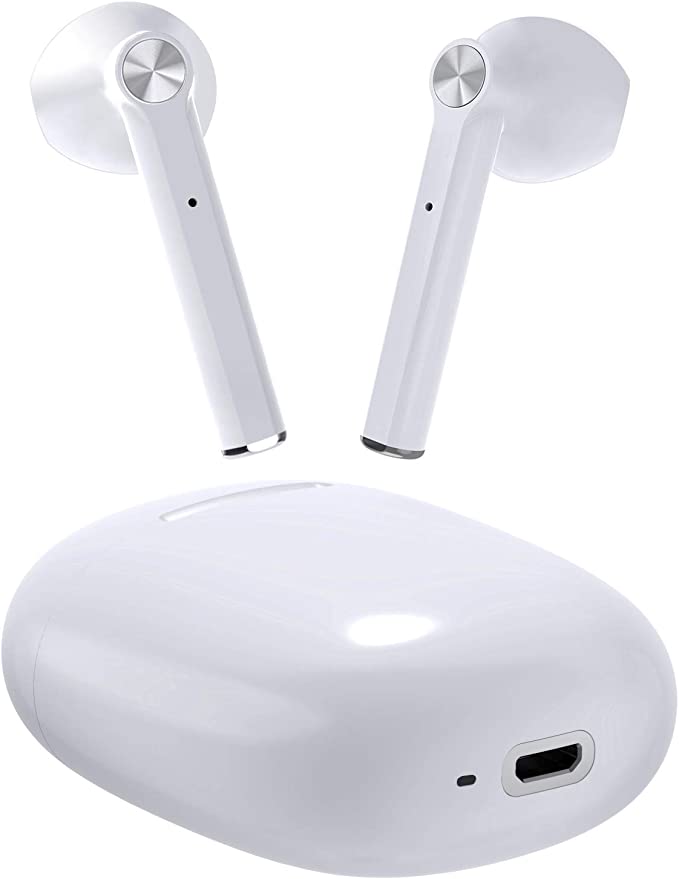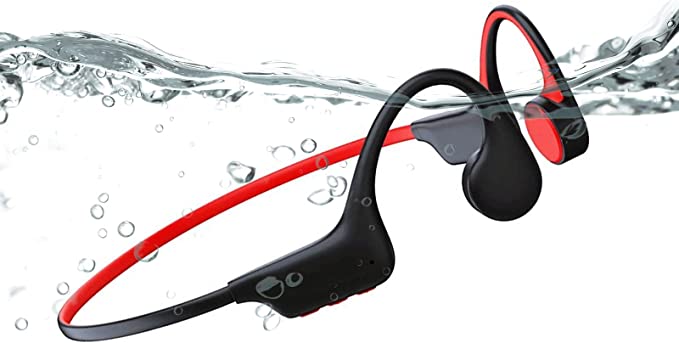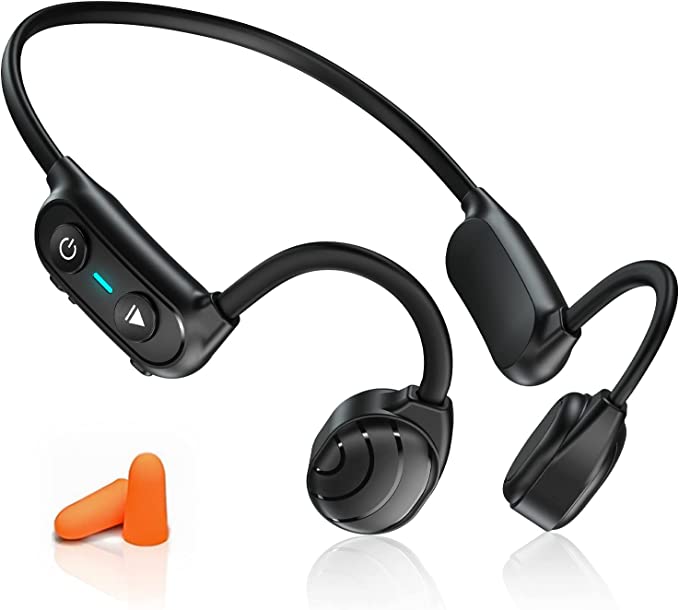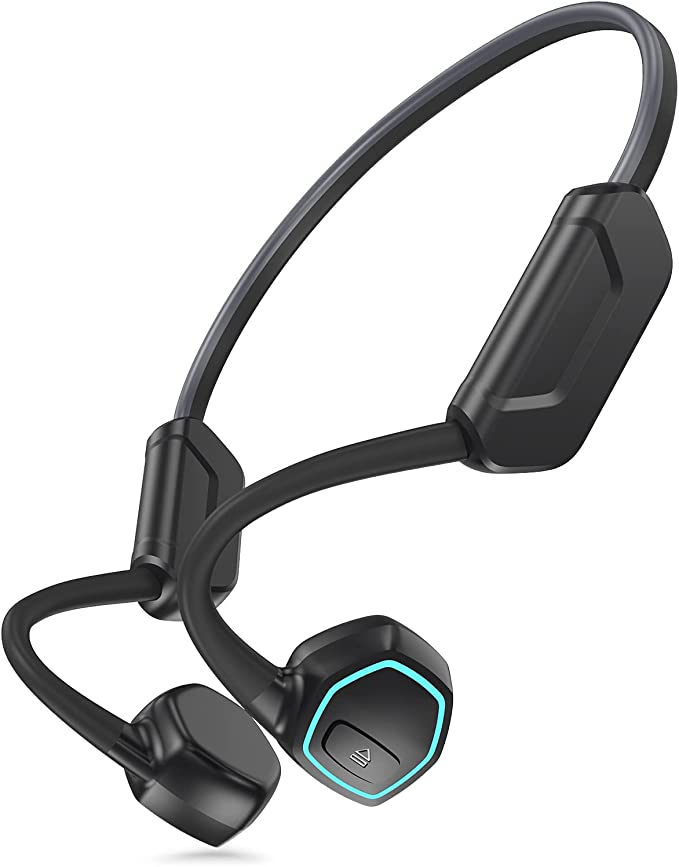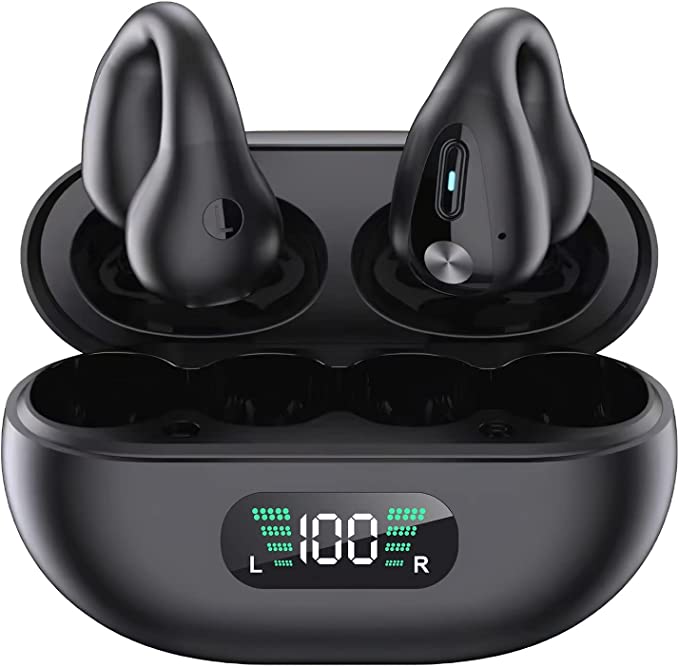mojawa MOJO1 Open-Ear Headphones: The Science of Aware Audio and Enhanced Bass for Active Lifestyles
Update on May 14, 2025, 4:29 p.m.
What if I told you that the vibrant tapestry of sound could reach your mind through an entirely different pathway than the one you’ve known all your life? Imagine listening to your favorite symphony, an engaging podcast, or taking an important call, all while your ears remain completely open, fully attuned to the world’s ambient whispers and roars. This isn’t a futuristic fantasy; it’s the remarkable reality of bone conduction audio, a technology that invites us to experience sound as a tactile dance upon our very bones. Today, we’ll journey into this fascinating realm, exploring its scientific underpinnings, its storied past, and how modern innovations like the mojawa MOJO1 Open-Ear Bone Conduction Wireless Headphones are refining this extraordinary sensory experience.

A Journey Through Time and Sensation: The Story of Bone Conduction
The concept of hearing through bone is not a recent invention. History whispers tales of Ludwig van Beethoven, the colossal composer, who, as his airborne hearing tragically waned, purportedly discovered he could still perceive the notes of his piano by biting down on a conducting baton pressed against the instrument. While the specifics of this anecdote are debated, it beautifully illustrates the core principle: sound is vibration, and vibration can take multiple routes to our inner sanctum of hearing.
Scientifically, what Beethoven (and others before and since) stumbled upon is that our skulls are excellent conductors of vibration. Conventional hearing, or air conduction, involves sound waves traveling through the air, into our ear canal, vibrating the eardrum, which then transmits these vibrations through the tiny bones of the middle ear (the ossicles) to the cochlea—the spiral-shaped, fluid-filled organ that is essentially the microphone of our brain. The cochlea converts these mechanical vibrations into electrical signals that the auditory nerve carries to the brain, where they are interpreted as sound.
Bone conduction ingeniously bypasses the ear canal and eardrum. Instead, specialized devices called transducers rest on the bones of the skull, typically the cheekbones (zygomatic arches) or the mastoid process behind the ear. These transducers convert audio signals into subtle mechanical vibrations. These vibrations then travel directly through the cranial bones to the cochlea. It’s a direct line, a somatic shortcut, to auditory perception. This principle is not entirely alien to nature; some animals, like elephants, are known to sense ground vibrations through their bones, offering them another layer of information about their environment.
The inherent beauty of this mechanism lies in its primary benefit: situational awareness. Because the ear canal remains unobstructed, you retain the ability to hear your surroundings naturally. This is not just a convenience; for cyclists, runners, pedestrians in busy urban environments, or even office workers needing to stay alert to colleagues, it’s a profound safety advantage. Furthermore, for individuals with certain types of conductive hearing loss (where the outer or middle ear has difficulty transmitting sound), bone conduction can offer a viable pathway to clearer hearing.

Mojawa MOJO1: Engineering a Modern Conduit for Bone-Borne Sound
The journey from a fundamental principle to a refined, everyday technology is one of meticulous engineering. Mojawa, with its MOJO1 headphones, has explicitly stated its mission to tackle the historical challenges that have sometimes accompanied bone conduction audio – namely, achieving satisfying bass response and minimizing sound leakage. Let’s delve into how this device endeavors to transform a natural phenomenon into a sophisticated listening experience.
(Image: A sleek shot of the mojawa MOJO1 headphones, perhaps with a subtle overlay indicating vibration paths on a stylized skull.)
The Pursuit of Sonic Depth – The Bass Note Challenge
One of the most persistent critiques of earlier bone conduction headphones has been a perceived weakness in the low-frequency range, or bass. The physics of sound makes reproducing deep bass challenging for any compact audio device, but it’s particularly so for bone conduction. Low-frequency sounds have longer wavelengths and require more energy and surface area to be effectively transmitted as vibrations. Simply “shaking the bone harder” can lead to unpleasant buzzing rather than clear bass.
The Mojawa MOJO1 introduces its patented MeglevBass™ actuator as a core innovation to address this. While the precise, proprietary mechanics are Mojawa’s own, we can explore the conceptual science. The term “Meglev” itself evokes “magnetic levitation.” In principle, using magnetic fields to suspend or actuate a vibrating component could allow for incredibly precise, responsive, and powerful movements with minimal unwanted resonance or distortion. Imagine a tiny, perfectly controlled drum skin, but instead of air, it’s delivering its rhythmic punch directly to your bone. If the actuator can generate more forceful and accurately controlled low-frequency vibrations without simply becoming a “buzzer,” it could significantly enhance the perception of bass. The aim, as described by Mojawa, is to create a “wider sound range and deeper basses.” This allows users to experience a richer, fuller audio profile – feeling the thrum of a bassline during a workout, for instance – without the occluding effect of traditional headphones. The TechRadar review (February 2022) did note “Good bass levels” for the Mojo1, which suggests progress in this challenging area.

Your Audio, Your World – Clarity, Privacy, and Openness
The most immediate and perhaps profound benefit of the MOJO1’s open-ear design, inherent to bone conduction, is the uncompromised connection to your surroundings. This situational awareness is paramount. However, an open design can sometimes raise concerns about sound leakage – the phenomenon where your audio becomes audible to those nearby. Mojawa claims the MOJO1 can eliminate “above 90% leakages.” This is likely achieved through a combination of factors: the precise design and acoustic dampening of the transducer housing, the way the transducers couple with the cheekbone, and the materials used, all working to direct vibrational energy inwards rather than letting it radiate excessively as airborne sound. Think of it as carefully soundproofing a tiny, personal concert hall.
For conversations, particularly in dynamic environments, clarity is key. The MOJO1 integrates “intelligent built-in microphones” designed for echo cancellation and noise reduction. Mojawa states these can reduce up to 60dB of environmental noise and 100% of echo. This typically involves sophisticated digital signal processing (DSP). Multiple microphones might be used to create a directional beam towards the user’s voice, while algorithms analyze incoming sound to differentiate between the desired speech and unwanted ambient noise or reflected sound (echoes), then actively filter out the latter. The result? Your voice comes through more clearly to the person on the other end, even if you’re navigating a bustling street or a windy park, allowing for intelligible communication without needing to shout or find a quiet corner.

Crafted for an Active Life – Materials, Resilience, and Ergonomics
An active lifestyle demands technology that is not only functional but also comfortable, durable, and resilient. The MOJO1’s construction speaks to these needs. The frame utilizes titanium, a material celebrated in aerospace and medical fields for its remarkable strength-to-weight ratio, flexibility, and corrosion resistance. Mojawa highlights its ability to be “folded to 360°,” a testament to this flexibility, which allows the headphones to conform to different head shapes and withstand daily handling. This titanium core is then “covered by a skin-friendly silicone.” Silicone is chosen for its soft, non-irritating feel against the skin, its grip which helps keep the headphones in place during movement, and its resistance to sweat and oils. The overall package weighs a mere 34 to 34.5 grams, aiming for a “barely there” sensation during extended wear.
A critical feature for any sports-oriented headphone is its ability to withstand the elements, primarily sweat and rain. The MOJO1 boasts an $IP67$ rating. This Ingress Protection rating is an international standard. The first digit, ‘6’, signifies that the device is completely dust-tight – no ingress of dust is permitted. The second digit, ‘7’, indicates protection against the effects of temporary immersion in water, specifically up to 1 meter for 30 minutes. For the user, this translates to peace of mind. Whether you’re caught in an unexpected downpour on a run, sweating profusely during an intense gym session, or simply want to rinse them off after use, the $IP67$ rating suggests the MOJO1 is built to endure. It’s crucial to understand, however, that this rating does not make them suitable for swimming; underwater acoustics and prolonged submersion present different challenges. Imagine the $IP67$ rating as a robust weather shield for your audio companion, ready for almost anything your terrestrial adventures throw at it.

Powering the Uninterrupted Experience
The most advanced features are moot if the battery doesn’t last. The MOJO1 is equipped with a battery designed to provide 8 hours of continuous music playback or call time, which for many users translates to a full day’s intermittent use or several workouts on a single charge. Mojawa also claims a one-week standby time. This endurance is packed into a compact form factor, a testament to modern Lithium-ion battery energy density.
When it’s time to recharge, the MOJO1 utilizes a magnetic charging cable, which offers the convenience of easy, snap-on connection. A full charge is achieved in approximately 1.5 hours. For those moments when time is short, Mojawa’s product information highlights a quick charge capability: a mere 5-minute charge can provide around 2.5 hours of listening time. (It’s worth noting the TechRadar review from early 2022 mentioned the Mojo1 lacked a quick-charge option, so this may represent a product update or a feature highlighted more prominently since then.) Finally, a stable and efficient wireless link is maintained via Bluetooth 5.0, ensuring reliable audio streaming and call connectivity.
An Aura of Safety – Beyond Just Open Ears
While the open-ear design is the primary safety feature, Mojawa adds another subtle layer for those active during dawn, dusk, or at night. The inclusion of two Alula reflective strips might seem minor, but it’s a thoughtful touch. These strips are designed to catch and reflect light, such as car headlights, enhancing the wearer’s visibility to others. This utilizes the principle of retroreflection, where light is reflected directly back towards its source with minimal scattering, making the wearer more conspicuous in low-light conditions. It’s a simple yet effective addition that complements the inherent safety of being able to hear your surroundings.
The Nuances of a New Sensation: Embracing the Bone Conduction Experience
Listening via bone conduction is a distinct sensory experience. Some users, particularly those new to the technology, report a “tickle” or a noticeable tactile vibration on their cheekbones, especially with bass-heavy music or at higher volumes. This isn’t a defect but rather a characteristic of the direct mechanical vibration that defines the technology. For many, this sensation diminishes with acclimatization, becoming an ignorable part of the experience.
The fit and placement of the transducers are also more critical for bone conduction than for traditional headphones. Optimal contact with the cheekbones is essential for achieving the best sound quality, particularly bass response, and consistent stereo imaging. A loose fit can result in a thinner sound and reduced volume. The flexible yet secure design of headphones like the MOJO1 aims to provide this consistent contact across various head shapes and during movement, but individual experiences can vary, and users may find they need to make minor adjustments to find their personal sweet spot.
Who stands to benefit most from this technology? Athletes like runners and cyclists who need to hear traffic; outdoor enthusiasts who want to stay connected to nature’s sounds; commuters navigating busy public transport; office workers who need to hear colleagues while listening to audio. It can also be an excellent option for individuals who find in-ear buds uncomfortable or irritating, or, as mentioned, those with certain conductive hearing impairments.
Concluding Thoughts: The Resonating Future of Aware Audio
The journey of bone conduction, from a curious natural phenomenon and rudimentary historical applications to the sophisticated technology embedded in devices like the Mojawa MOJO1, is a compelling narrative of human ingenuity. It represents a paradigm shift for many, moving away from auditory isolation towards a more integrated and aware listening experience. The MOJO1, with its focused engineering on bass enhancement via the MeglevBass™ actuator, its robust $IP67$ rating, and its commitment to an open-ear design, exemplifies the strides being made to refine this unique audio pathway.
As our lives become increasingly intertwined with personal technology, the demand for audio solutions that don’t detach us from our physical environment will only grow. Bone conduction, once a niche concept, is now firmly establishing itself as a mature and compelling option. It reminds us that hearing is a complex, multifaceted sense, and that the symphony of the world, and our own personal soundtracks, can indeed dance together harmoniously upon our very bones. The future of audio is not just about higher fidelity or smaller devices; it’s also about smarter, safer, and more seamlessly integrated ways of listening, and bone conduction is undoubtedly playing a key, resonant role in that unfolding story.


